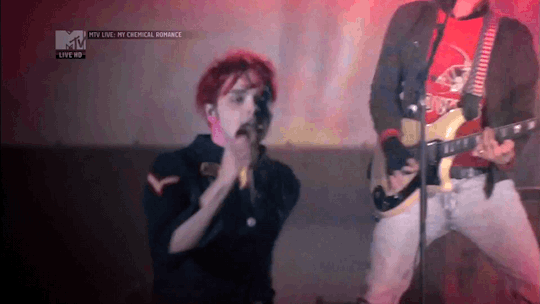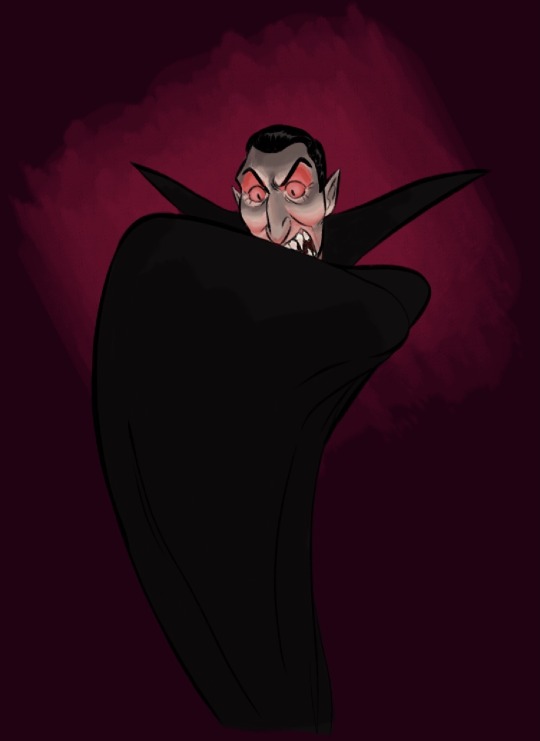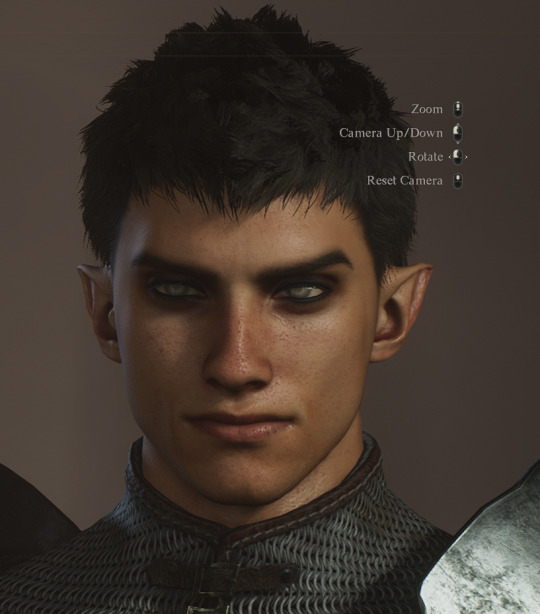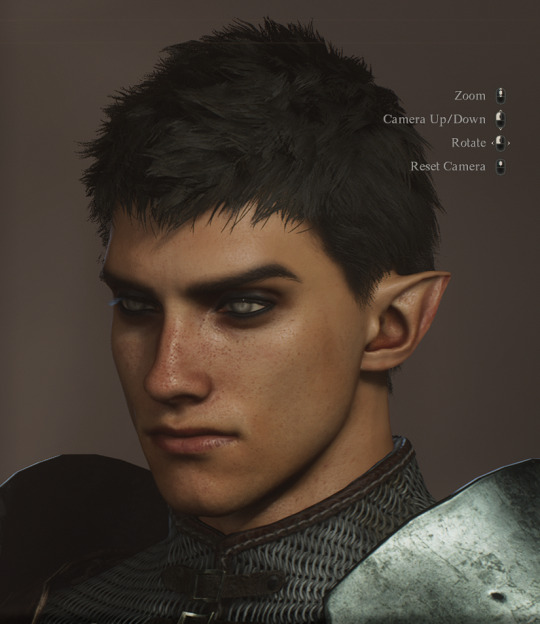#drac
Text

What if half-orcs had little manes... 🥺👉👈
3K notes
·
View notes
Text
first letter from my good friend Jonathan: paprika recipes!
first message from my new pen-pal Ishmael: the only cure for suicidal depression is the Sea.
2K notes
·
View notes
Text




peace and love and renfield
176 notes
·
View notes
Text

CAUGHT YOU!! by Drac
※Illustration shared with permission from the artist. If you like this artwork please support the artist by visiting the source.
#baobhan sith#バーヴァン・シー#fairy knight tristan#tam lin tristan#fate grand order#fgo#drac#fate#posted art
130 notes
·
View notes
Text

Daily drawing 29 mar 2024
Jeriba Shigan, from Enemy Mine. RIP Louis Gosset Jr.
#jeriba shigan#jerry#drac#enemy mine#science fiction art#fanart#rip louis gosset jr#daily drawing#drawing of the day#watercolor#brush and ink#traditional art#axel medellin#axelmedellinart#axel medellin art
36 notes
·
View notes
Text
woke dracula: vhat ever happened to my cancelvania twist?
71 notes
·
View notes
Photo

(x)
#gerard way#frank iero#party poison#fun ghoul#drac#Live at MTV Valencia 2011#mcr#my chemical romance#danger days era#tw: flashing lights#rubbish78gifs#my gifs
140 notes
·
View notes
Text
today would've been arthur and lucy's wedding...
421 notes
·
View notes
Text
Wild Horse
This is for @dr-aculaaa!! If you are not Drac, keep it moving. (Or you can stay and read this and also read Gutterballs. That would be preferable.)
Read Gutterballs here!
You made a mental note to check the feeder on the front porch later, lest Cecil and Maria lie around your bottlebrushes in wait. It felt silly to name them, you couldn’t even be sure it was the same birds coming around. But, in your heart, you knew it was only right. After all, they were guests here and the weather had just begun to turn. And who were you to deny a guest a drink?
Your fingers were tacky with watercolor pigment and the stretchy latex cling of foam glue. The green of your cutting mat had faded into a teal with use, and cold-pressed watercolor paper fragments stuck to the wide planes of white buffalo sprinkled across your fingers. You should take them off when you do things like this, really, you should. But you thought they looked so pretty when the pigment-tinted water splattered on them and dried.
You looked yourself in the eyes, a mirror reflection encased in talavera tile. You felt the same. The curls arranged in a fast-choreographed pile on your head looked a little more ashen every day. Gray. You forced yourself to regurgitate the word and swallow it again. You made a promise to yourself at twenty that you would not be your mother. That you would embrace it with open arms and welcome it into your home. You just didn’t expect it to arrive so soon.
Pulling yourself away from that mirror, pulling your attention back to the table in front of you. Two thousand one hundred and sixteen running legs, fastened to five hundred and twenty-nine bodies, using one thousand and fifty-eight silver pins. They ran in a stampede of color and pattern and texture. Each one meticulously painted and assembled as its own beautiful being. Each one aptly named.
“I don't know. Maybe. And I don’t know where she’s got that salvaged hunk of tin parked now, but I hope she’s still painting.”
“What did she paint?”
“Everything. Nothing. Me. Herself. Her abundance of rescued desert mutts. Stars. Clowns. Butterflies and Cactuses.”
You laughed solemnly, reaching a finger upwards to feel the raised flesh of hummingbird feather lines before you reached down to pause Gutterballs.
That salvaged hunk of tin sat, still loved and maintained at the end of the property, under her covered carport home. Once a year, during your off-season, she housed one lucky art student in residency for one week as a retreat. Retired, much like you. But did either of you ever truly work?
It was a beautiful life you lived, and you belong deeply to yourself. Bittersweet like the bite of a pimento. You wrinkled your nose thinking about it.
On the back side of the canvas, you inked in delicate writing, “Wild Horses Couldn’t Drag Me Away, 2024” Along with the swirling, sharp aperture of your signature. Though, the piece felt incomplete, merely a mass of horses with no direction.
You trimmed one last body, a swirling, wild mane and a pointed, sure head bowed in forward-facing determination. You pressed the last brass button through the legs and flank of the last horse, wanting to apologize to it for the first prick of creation, yet relished in his brilliant red hue. You placed him further than the others, pulling him forward and out of the stampede. As if he was running harder, faster, than the others.
You think you’d name him Eddie.
#eddie munson#stranger things#stranger things s4#eddie munson fluff#eddie munson oneshot#eddie stranger things#eddie munson headcanons#eddie munson smut#eddie munson angst#eddie munson imagine#eddie x you#eddie munson x reader#flea#flea's friends#drac#Spotify
25 notes
·
View notes
Text

Our internet was out all of last night so i drew a ton of Drac
#drac#half orc#dungeons and dragons#dnd#5e#fighter#wizard#waterdeep#ttrpg#original character#character art#character design
516 notes
·
View notes
Text

The dragon from Vilafranca del Penedès, Catalonia.
Dragons are a common element in Catalan traditional festivities like festa major and corpus. Vilafranca's old dragon dates back to the year 1600, though archaeological studies of it suggest it might be older.
Nowadays, the original dragon is only used on the day of Saint Felix, patron saint of the city. For the other festivities, a modern replica made of lighter material is used. It's usual that figures used in festivities (dragons, eagles, giants) are re-made in modern material.
Photo by Fototeca Patrimoni on Instagram.
#vilafranca del penedès#catalunya#tradicions#drac#dragon#catalonia#traditions#cultures#festa major#culture#ethnography#travel#bestiary#folk culture#folklore#europe#travel photography#wanderlust
137 notes
·
View notes
Text

HALLOWEEN
62 notes
·
View notes
Text

Topaz by Drac
※Illustration shared with permission from the artist. If you like this artwork please support the artist by visiting the source.
63 notes
·
View notes
Text
So, recently @drachenwiki has done a very nice reblog of one of my posts (thank you!) and evoked something very interesting. I didn't want to just answer in a simple reblog, so I'll make a new post about it. Here is what drachen said:
I noticed an interesting connection here. In Greek fairy tales, there is a character that’s pretty similar to the ogre, but is called Drakos (Δράκος). The name is obviously derived from Drakon (δράκων), which means serpent and is the origin of the word “dragon”, but the Drakos is a supernatural humanoid, like the ogre sometimes fully human-looking, sometimes with monstrous traits, but almost never with the serpentine traits that define dragons.
I unfortunately do not have enough knowledge about Greek fairytales as a whole to be able to fully answer or react o the character of Drakos - even though I can say, as someone who studied ogre, that there is a very obvious general connection and "family link" between ogres and dragons, the same way there is one between ogres and giants. Ogres and dragons, are the two sides of the "devouring fairytale villain", whose main threat is eating the character ; both of them dwell in usually hostile landscapes such as deep forests or grottos ; and both of them are usually said to have great riches and treasures.
But what I originally wanted to say is this. I don't know if you had heard of it, but in French folklore there is a character that sound very similar to the Greek Drakos, and seems to be very clearly some sort of cousin. He is frequently found in French folktales and oral fairytales collected in various regions of France - and in fact he is one of the most prominent and well-known monster of French legends. It is the Drac.
Long story short...
The Drac is a folkloric being of Southern France. It is a water-dwelling entity that is most commonly said to inhabit rivers and lakes, sometimes streams and wells - some folktales even make him sea-dwelling, though most of the time he is a being of fresh water. There were several dracs around France corresponding to the various important bodies of water - though folktales like to always refer to "THE" Drac.
The Drac obviously comes from the same etymological and cultural roots as the dragon. "Drac" comes from the Latin "draco/draconis", itself from the Greek "drakon" and it is all the same family as "drakkar" for example. If it wasn't enough of proof we have in the Occitan language words such as "dracmarin" for "sea dragon" (marin meaning "of the sea" in modern French). As a result, the Drac is considered to be a reptilian being... But the exact nature of the Drac is unclear.
You see, sometimes the drac is described as a dragon-like entity dwelling at the bottom of the lake or sea (a winged, enormous lizard-being) ; or as a giant water-snake. But that's only sometimes because one of the main features of the Drac is that it owns a power of shapeshifting, meaning one can never be sure of what shape the Drac will appear as. Most often, the drac takes the shape of a beautiful young man (to lure his victims or better wander among humans, as we'll see later), but there are many tales and legends claiming the drac can turn into various animals (black donkey, red she-horse, bunnies, lambs...) or even into objects (like a log, or a basket). Given the two shapes of "reptilian being" and "beautiful human" are the most famous and widespread, it often results in depictions of the drac as a scale-covered humanoid or as a dragon with the head of a beautiful boy.
The other main trait of the drac is that he is known to keep luring and dragging humans under water, off into his under-river or under-lake lair. But the how and the why of it all keeps changing depending on the regions and time. It is most agree that the Drac targets, out of all humans, women - especially pretty young girls (making him more similar to the traditional "dragon haunting damsels"). Washer-woman were heavily warned about the drac, and were depicted as his easiest victims due to being women spending so much time by the water-shore. Sometimes the drac uses his face of a handsome young man, or his beautiful singing voice, to attract his victims (some regions even call him a "male mermaid"); other times, the drac is known to let float at the surface of water gold coins, jewels, mirrors and other precious items. All in all - you are lured into the water, and once far away enough, the drac snatches you and takes you underwater.
Here's however where your fate changes depending on which "aspect" of the Drac you face.
In popular beliefs and superstitions, the drac is a water bogeyman in the same way as Jenny Greenteeth and the other water-hags of England. As such, he is depicted as a man-eater who lures humans to drown them and devour them. (Sometimes he doesn't even eat them, and he is just a demonic and evil being who drowns them for pure fun).
In folktales however the Drac can become more alike to the traditional "capture-maidens dragon", or to the general archetype of the monstrous husband. There is a very famous Gascogne fairytale (precisely the one that, to my knowledge, is the only depicting the drac as sea-dwelling rather than fresh-water-dwelling) that paints him as some sort of elemental spirit, a "king of water" that commands the winds and the storms - he steals away a maiden with which he fell in love to force her to become his bride, but she refuses. He still keeps her trapped in his beautiful underwater palace and gardens - and only allows her to walk for a limited time at the top of the waves and the surface of the waters, with a golden chain tied to her ankle. A hero has to break the chain and gets her to shore as fast as possible - because the drac has no power on land.
The most famous incarnation of the drac however is the drac of the Rhônes, illustrated in stories such as the legend of the drac de Beaucaire. This drac is much more akin to the fair-folk and "good neighbors" of the British Isles - as in, in various stories and tales he is described as stealing away a nurse from the human world so she can take care of his babies and breast-feed his children for seven years. Once she had done her work, the drac allows her to return to the human world above the waters - but something happened. The nurse got one eye "enchanted" so that not only does she see clearly in the water, she also can see the Drac's true appearance even under his human disguises. For some she mistakenly got some of the fat of one of the "snake-cakes" of the Drac into her eyes ; for others, the Drac offered her a box of enchanted human fat (because the dracs are still man-eaters in these tales) that would give strength and health to her baby, with the clear instruction to always wash her hands after using it - and she gets it in her eye... Anyway, all in all she ends up spotting the drac in the middle of her town or village, and she politely salutes him with his real identity. The drac, surprised at having been recognized under his disguise, asks her with which eye she saw him. She tells him, and the drac promptly gouges out the enchanted eye.
And these are just the main aspects and appearances of the drac based on his main "underwater magical being" persona. But you see, the "drac" is actually a bit like the "bogeyman" as in, you have an iconic name, some key traits, but everybody has a different version of it. Same thing for the drac - antagonist sea-prince of fairytales, child-eating water-bogeyman, aquatic "good neighbor" and fair folk... But in some regions the name "drac" will be use for werewolves! Everything in these stories clearly describe a werewolf, except the name. But this seems to be because as France was Christianized there was an habit of making the drac of demon - which is why many tales describe this being as a "water demon", as a "bird-hating demon", as "the son of the devil"... And in the Pyrénées, the drac even got an alternate identity fusing himself with another famous folklore archetype. The magical-but-deadly-horse ; the devil's donkey that snatches children. This creature exists in other regions of France as its own thing, its own being, but in the Pyrénées sometimes it gets fused with the drac into one being. A magical donkey or enchanted horse - sometimes white, sometimes red - that will invite tired travellers or innocent children on its back. It can extend its back to carry as many children as it needs ; or it can enlarge its body to fit the weight and girth of any rider ; but once you are on the beast's back, it will take you on a wild and terrifying ride that will end in a body of water where you will drown.
Usually this identity as the "magical horse" or "magical donkey" is thought to be just one of the various "tricks" of the drac - tricks and "pranks" typical of fair folk and other supernatural beings of Europe. Remember when I evoked his shapeshifting? The "lamb" part comes from a local legend claiming the drac likes to turn into a cute little lamb, but if you try to carry it in your arms or on your back, it will become heavier and heavier until it crushes you. Other local tales evoke stories of the drac turning into a ball of thread, and allowing a girl to weave a dress out of him - but once she wears the dress in public, the thread will disappear, destroying the dress and leaving the girl naked in front of everybody.
Again this all seems tied again to the "demonization" of the Drac - who was considered to be part of those nasty lutins, demonic imps and other annoying little devils that spent their time harassing everybody with cruel or disgusting pranks. But anyway my main point stays - a humanoid man-eating being with dragon roots, and an obvious dragon name despite ending up not looking like a dragon at all...
24 notes
·
View notes
Text
Since the original wouldn't let me reblogged it I decided to recreate it.
(This is probably how that vampire dad, Drac, from Hotel Transylvania has sex.)
Never underestimate the power of a space pirate 😏
#funny videos#funny shit#funny stuff#lol#hotel transylvania#hotel transilvânia#drac#take all you can#give memes back#space pirates#🏴☠️
101 notes
·
View notes
Text


Brainrot (making Drac in the DD2 character creator)
7 notes
·
View notes